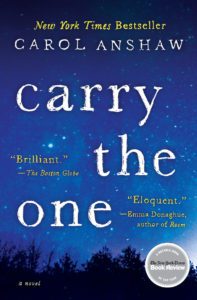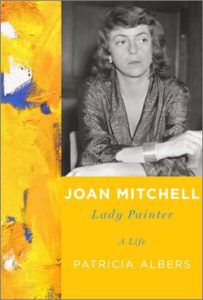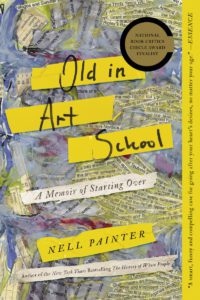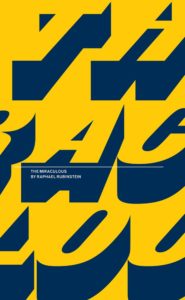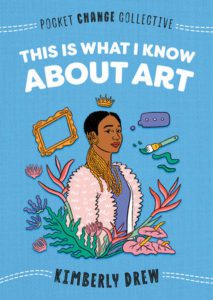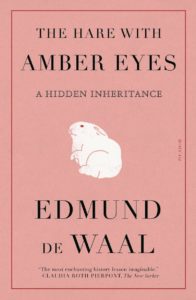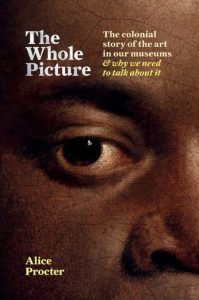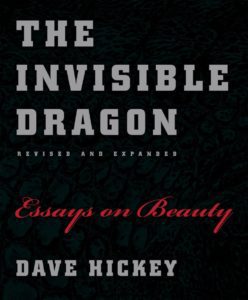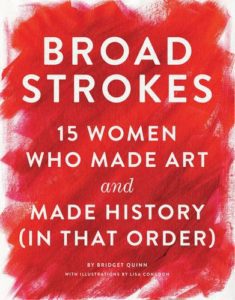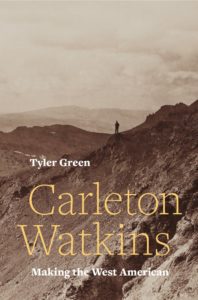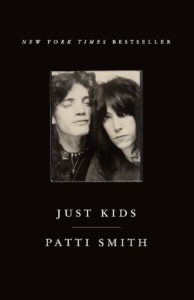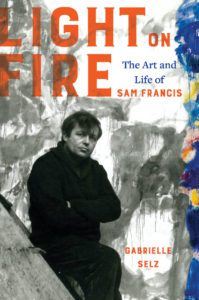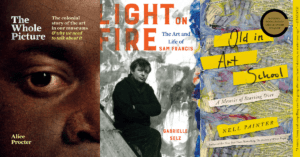
As far back as I can remember, my appreciation of pictures and words coincided. My father was a museum director, my mother a short story writer, and our home was filled with art and books. On weekends, I sat atop my father’s shoulders to visit museums and galleries. At night, I nestled beside my mother as she read to me. Then my parents divorced. My father got the art, my mother the books.
For years, I longed to unite these two halves. I studied first art history, then writing. For a while, because I couldn’t choose one over the other, I stopped studying both. Ultimately, I discovered in my own work an alchemy that fuses the two universes.
Below are some books that I admire in different genres that interpret, construe, and illuminate the visual arts through the magic of words. Each offers me a unique way of imagining and contemplating art and gives me insight into the variety of people who engage in the process of creation. Each uses language to enhance perception, returning readers to the world with a new way of seeing.
***
Carry the One by Carol Anshaw
Anshaw’s novel follows three siblings and their friends after a devastating event. In the first chapter, the main characters are on their way home from a wedding when their car hits and kills a young girl. This death forms the foundation for the rest of the book. Dealing with the repercussions, Anshaw’s characters take refuge in love, drugs, politics, and art. The reader is led to understand how each life, both lived and unlived, affects the other lives. Alice, a queer painter in love with Maude, another occupant of the car on the fateful day of the crash, copes with the young girl’s death by giving her the life on canvas she didn’t have in reality. Anshaw writes, “Alice was beginning to see the terms of these paintings. She would wait for them to arrive and then paint them, like the clicking of a shutter, making snapshots out of oil and canvas. This was the central point of her art now, to records the girl’s unlived life.” In the end, it is Alice who sums up the impact of the girl’s death: “Because of the accident, we’re not just separate numbers. When you add us up, you always have to carry the one.”
Joan Mitchell: Lady Painter by Patricia Albers
Born a steel heiress, Mitchell became one of the finest and strongest abstract painters in America and Europe, creating an elastic painting vocabulary with color, shape, and gesture. Albers, in the first full-length biography of Mitchell, is unflinching in recounting the details of Mitchell’s tumultuous life, and she skillfully discusses Mitchell’s mode of perception. Mitchell had synesthesia. For Mitchell, letters, words, sounds, and even emotions had chromatic equivalences. Lady Painter is not just an informative and marvelously entertaining chronicle; it is one of the few biographies of an artist where the author achieves a tactile sense of the process of the creative act.
Old in Art School: A Memoir of Starting Over by Nell Painter
Upon her retirement from a successful academic career as professor emeritus of American history at Princeton University, Nell Painter, age sixty-four, decided to go to art school. Having loved sketching as a young woman, she wanted to paint and to be seen as an artist. Decades in academia had taught her about the institution’s role in gatekeeping. “Institutions conferred not simply knowledge, but also a means to be seen,” she writes. Enrolling in the Mason Gross School of Art at Rutgers University, Painter grapples not just with learning to produce art, but questions of history—how other women artists have been seen and judged on their age, race, and appearance. She writes that the African American artist Howardena Pindell kept working to “deprive The Art World the satisfaction of shutting her down.” In turn, Painter learns that her own images “carry their own visual meaning, which may or may not explicate history usefully or unequivocally. For me now, image works as particularity, not as generalization. That is how art school changed my thinking about history and how visual art set me free.”
The Miraculous by Raphael Rubinstein
The Miraculous is a slim collection of fifty micro-narratives, wherein Rubinstein recounts the works and lives of contemporary conceptual artists. Instead of focusing on an interpretation of the artistic practice, Rubinstein combines poetic storytelling, aphoristic description, and art criticism. Each chapter is a revelation, a moment or series of encounters when the artist’s habits and ideas transform into art. There are no names in these stores, only in the index at the end, where you can check and see if you recognized the artist from Rubinstein’s poetic renditions. But each adventure sheds light on the persistent, haphazard, miraculous process of creation.
This Is What I Know about Art by Kimberly Drew
Art can be intimidating, and author Kimberly Drew wants that to change. In her memoir, marketed to a young adult audience but valuable to all readers, Drew charts her relationship to art and activism. Chronicling a summer internship at the Studio Museum in Harlem, Drew details her awakening desire to learn more about Black artists. Drew’s writing is accessible; she aims to be inclusive, and not just in her writing style. After academic training that included few Black artists in the curriculum, Drew’s ambition is to broaden the lens and make Black art accessible to all, especially to young people of color. Drew writes, “This is not your traditional text about art, protest, or anger by an established scholar. This is my story about loving art so much that you want to see it change for the better.”
The Hare with Amber Eyes: A Hidden Inheritance by Edmund de Waal
This memoir follows the journey of the ceramic artist Edmund de Waal after his uncle bequeathed him a collection of two hundred and sixty-four netsukes: tiny, Japanese, intricately carved wood and ivory figures of animals. The inheritance provoked de Waal to ask his father, former Dean of Canterbury Cathedral, for clues to the family history. Traveling to Paris, Vienna, Tokyo, Odessa, and London, de Wall then traced five generations of his Jewish banking family and their strange inheritance. The story he eventually writes is about the intersection of art objects and the people they outlive. De Waal contemplates, “How objects embody memory—or more particularly, whether objects can hold memories—is a real question for me. This book is my journey to the places in which this collection lived. It is my secret history of touch.”
The Whole Picture: The colonial story of the art in our museums & why we need to talk about it by Alice Procter
The Whole Picture grew out of Alice Procter’s work as a tour guide, leading what she called “Uncomfortable Art Tours.” Her tours and book focus on how major art institutions came into being against a backdrop of imperialism. Procter writes, “Museums are more than just physical places designed to house collections. Their purpose is to shape identity and memory.” She then delves into a discussion of specific artworks that museums and the art historical canon have selected to construct narratives that uplift one set of viewers at the expense of others. In one chapter, she analyzes the allegorical painting The East Offering Its Riches to Britannia, revealing how the East Indian Company used the image to perpetuate the myth that they were a benevolent organization. Given recent decisions to remove statutes commemorating Confederate figures, Procter’s emphasis on the underlying inequality in the institution of the museum, and its discriminatory narratives, is particularly relevant. From a very different perspective, Procter asks a similar question as that of de Waal: “Who has the right to hold objects, and to tell their stories?”
The Invisible Dragon: Essays on Beauty by Dave Hickey
This is a powerful essay collection about the pleasure and problem of beauty in art. Hickey points out that art critics have become suspect of beauty for its ability to hijack reason, particularly in our modern era. Drawing from examples spanning Raphael and Caravaggio to Mapplethorpe and Warhol, Hickey rethinks the nature and rhetoric of beauty in Western art. He takes aim at art institutions and returns the power of beauty to the artist. According to Hickey, the point of art is beauty, and beauty is democracy in action. It’s an interesting hypothesis, and Hickey makes you think long and hard on the awesome power of beauty in a work of art.
Broad Strokes: 15 Women Who Made Art and Made History (in That Order) by Bridget Quinn
In fresh and accessible language, Quinn’s nonfiction book showcases fifteen women artists from the Renaissance to the present day. Some of the names are well-known; others, still obscure. Yet all the artists Quinn discusses “scramble and even redefine how we understand art and success.” Many of my own heroines are included in this book. After a difficult period in my sophomore year at college, the brutal work of Artemisia Gentileschi saved my sanity. Quinn points out how the bodies of Artemisia’s women are beautiful as well as strong. In multiple paintings, they resist being conquered by men or fight back. In another chapter, Quinn introduces readers to the work of Edmonia Lewis, the creator of one of nineteenth-century America’s most celebrated sculptures, The Death of Cleopatra. Born a free person circa 1844 and of mixed African American and Native American heritage, Lewis showed what Quinn describes as “phenomenal grit and ambition.” With income from her first commission, she sailed to Rome to master carving and chiseling marble. She eventually earned critical praise for her work that explored religious and neoclassical themes.
Carleton Watkins: Making the West American by Tyler Green
As someone who loves art, I often wonder, can art really change the world? Because it should. Carleton Watkins (1829-1916) changed our perception of our American landscape. Green points out that Watkins’s mammoth-sized black and white photographs of the rugged topography of the West shaped how Americans experience Western landscape as awe-inspiring, magnificent, and deserving of preservation. Indeed, Watkins’s pictures of the West, taken in the early years of the Civil War, played a crucial role in pushing the wavering West to the side of the Union against the South. Motivated by Watkins’s images, Congress passed legislation preserving Yosemite as a national park. This biography astonished me.
Just Kids by Patti Smith
This memoir, a love story and an elegy about Smith’s relationship with Robert Mapplethorpe, is also an evocative exploration of the milieu that creates the artist. Smith and Mapplethorpe’s creative awakening (hers to words and music, his to photography) occurred in the downtown New York scene between 1967–1974. The book is full of tantalizing encounters with the art world and rock stars. Smith shares vignettes about everyone from Janis Joplin and Andy Warhol to Salvador Dalí. But Smith’s creative awakening is also a heartbreaking ode to a generation lost to the AIDS crisis and addiction. Mourning Mapplethorpe’s loss from “the plague of a generation,” she writes, “Why can’t I write something that would awake the dead? That pursuit is what burns most deeply.”
And to close out this wonderful list, we just had to include Gabrielle’s new book, Light on Fire: The Art and Life of Sam Francis, out now from University of California Press! – Ed.
Light on Fire: The Art and Life of Sam Francis by Gabrielle Selz
Light on Fire is the first comprehensive biography of Sam Francis, one of the most important American abstract artists of the twentieth century. Based on Gabrielle Selz’s unprecedented access to Francis’s files, as well as private correspondence and hundreds of interviews, this book traces the extraordinary and ultimately tragic journey of a complex and charismatic artist who first learned to paint as a former air-corps pilot encased for three years in a full-body cast. While still a young man, Francis saw his color-saturated paintings fetch the highest prices of any living artist. His restless desire resulted in five marriages and homes on three continents; his entrepreneurial spirit led to founding a museum, a publishing company, a reforestation program, and several nonprofits. Light on Fire captures the art, life, personality, and talent of a man whom the art historian and museum director William C. Agee described as a rare artist participating in the “visionary reconstruction of art history,” defying creative boundaries among the likes of Jackson Pollock, Mark Rothko, and Willem de Kooning. With settings from World War II San Francisco to postwar Paris, New York, Tokyo, and Los Angeles, Selz crafts an intimate portrait of a man who sought to resolve in art the contradictions he couldn’t resolve in life.

